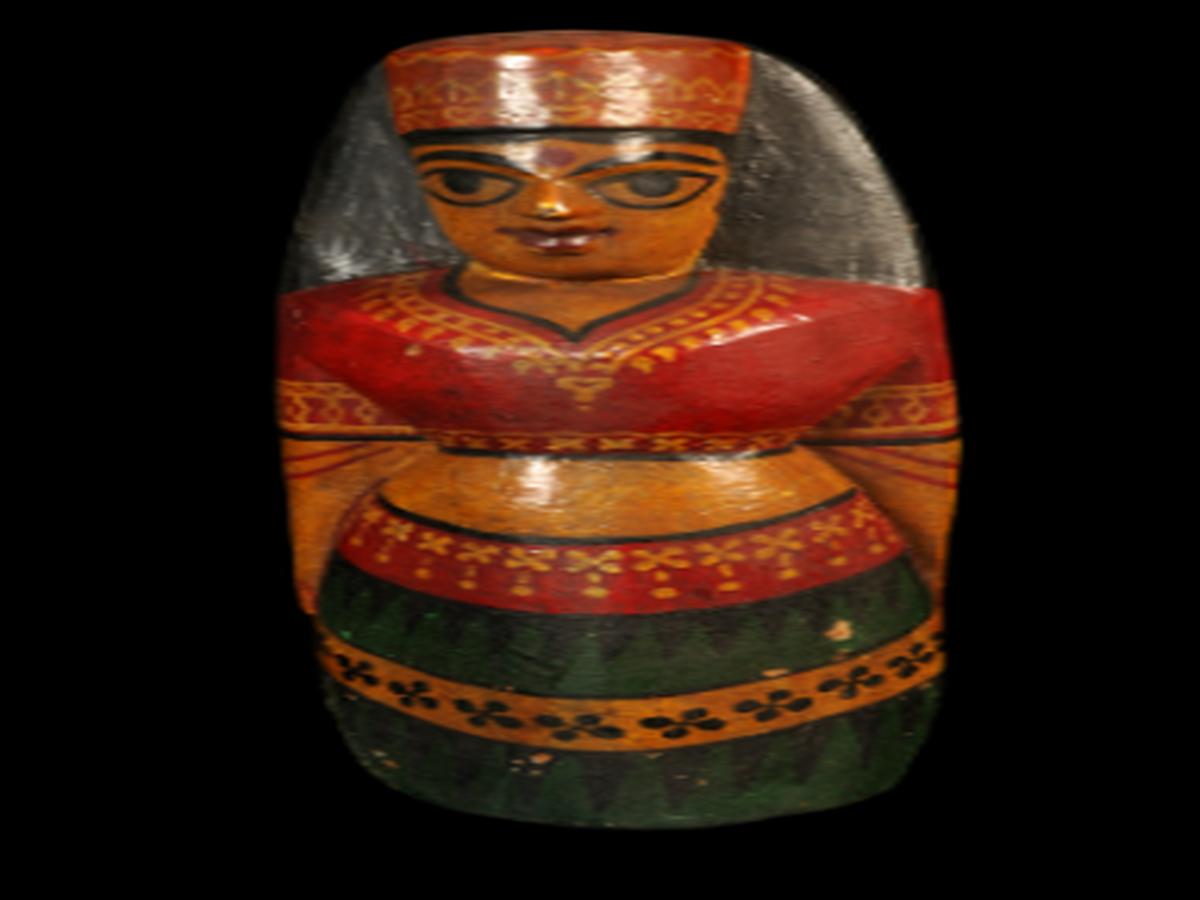State
Tribe Name
Art Type
short description
The effigy of Putul is in reality a beautiful carved and painted image of a woman, which is made from fine wood obtained from one piece. This traditional sculpture is a good rendering of the Dhamrai school, which has traversed into the region through cultural exchanges with neighbouring Bangladesh. In West Bengal, this craft of making Putul continues among the Sutradhar tribe (an artisan community ) whose literal meaning refers to "narrator" or "storyteller." Their work synergizes visual art with folklore and cultural symbolism.
Thumbnail

Filter Postion
Left
Filter Background
Off
Theme
Filter Header Image

content
Image

description
The effigy of Putul is in reality a beautiful carved and painted image of a woman, which is made from fine wood obtained from one piece. This traditional sculpture is a good rendering of the Dhamrai school, which has traversed into the region through cultural exchanges with neighbouring Bangladesh. In West Bengal, this craft of making Putul continues among the Sutradhar tribe (an artisan community ) whose literal meaning refers to "narrator" or "storyteller." Their work synergizes visual art with folklore and cultural symbolism.
The figure is characterized by a body painted yellow, a color usually associated with life, energetic spirit, and auspiciousness. Dress and ornaments are painted in shades of red, green, and yellow prominently lined with black, with intricate patterns reflecting traditional Bengali dress. Large almond-shaped eyes are a very characteristic feature of the Putul that renders a distinct character to the figure, almost as though the figure has been given a soul. These exaggerated eyes are a trademark norm of the Dhamrai style, symbolic of awareness and spiritual energy. The Sutradhars of West Bengal have held a long-standing tradition tied to wood and temple decoration; the Putul is not merely a decorative piece but an emblem for fertility, protection, and cultural identity. Such figures find a place in rural rites, festivals, and as cherished heirlooms through generations.
Image Mode
landscape
promoted
On
Verified
Off
